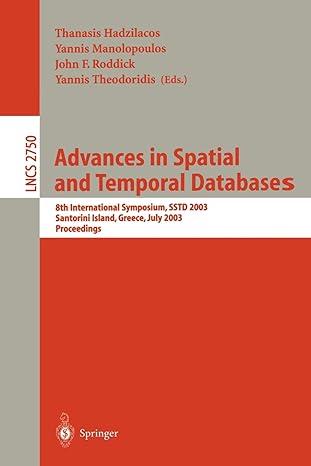Question
Please help with walking me through the project simulation below including the simulation method, excel table, and conclusion. Sequencing of Parts and Robot Moves in
Please help with walking me through the project simulation below including the simulation method, excel table, and conclusion.
Sequencing of Parts and Robot Moves in a Robotic Cell
Objective: Simulation of One part type problems with two machines to Determine the sequence of robot moves in the cell that maximizes the long-run average production rate.
Introduction: Industrial robots play an important role in advanced manufacturing systems. The most typical anthropomorphic, or humanlike, characteristic of a robot is its arm. The arm, together with the robot's capacity to be programmed, makes it ideally suited to a variety of production tasks, including machine loading, spot welding, spray painting, and assembly. The robot can be programmed to perform a sequence of mechanical motions, and it can repeat that motion sequence over and over until reprogrammed to perform some other sequence. A major application of industrial robots involves loading and unloading of production machines. These activities are carried out in a robotic cell, which consists of one or more production machines, the robot, and a material handling mechanism for delivering parts into and out of the cell. A real-life robotic cell with three machine tools M1, M2, and M3 and one robot is shown in figure 1. In this system, the machines perform drilling and boring operations on twenty-pound castings to be used in truck differential assemblies. The robotic cell, which is used to produce a set of parts of the same or different types at specified production rates, is a flow-line manufacturing system; that is, each part has to be processed on machine M1, then on machine M2, and finally on machine M3 (see figure 1). Note that in figure 1 machines M1 and M3 are drilling machines and machine M2 is a boring machine. Parts are brought to input buffer I by an index conveyor. Transfer of parts from I to M1, M1 to M2, M2 to M3, and M3 to O is carried out by the robot. The finished parts are removed from the output buffer O by a belt conveyor.
Simulation Project Description: Two-machine robotic cell producing a single part type
We deal with the problem of finding a sequence of robot moves in a two-machine robotic cell, which maximizes the long-run average production rate of a single part type to be manufactured in the cell. To begin with, let us see how we can instruct the robot to feed machines M1 and M2, assuming that both machines are unoccupied (or free) initially. We shall consider two different policies (d1 and d2) invoked when the robot with a part arrives at machine M2 (which is free) and has just completed loading it:
d1: Wait and unload M2.
d2: Move to I.
The robot picks up a part (say P1) at I, moves to M1, loads P1 on machine M1, waits at M1 until P1 has been processed, unloads P1 from M1, moves to M2, loads P1 on M2, moves to I, picks up another part (say P2) at I, moves to M1, loads P2 on M1, moves to M2, if necessary waits at M2 until the part P1 has been processed, unloads P1, moves to O, drops P1 at O, moves to M1, if necessary waits at M1 until the part P2 has been processed, unloads P2, moves to M2, loads P2 on M2, moves to I (to pick up a part, say P3). The robot moves that would form a cycle S2 to be defined later are indicated in figure 3.
We need a formal representation of the two policies just considered. Recognizing that our manufacturing system is a discrete dynamical system, we can represent each of the above policies as a sequence of discrete state transitions. With a little reflection, it is clear that it is sufficient to define the state of the system by a triple E = (el, e2, e3) , where e1={,}, e2={ ,} and e3 ={I, M-1, M-2, M+1, M+2}. Here ei = or means that machine Mi is not occupied (by a part) or occupied (by a part), respectively; e3 refers to the robot position with I denoting the robot at I just as it arrives there and begins to pick up a part, O denoting the robot just as it completes the drop of a part at O and begins to leave from there, M-i denoting the robot at Mi just after it has finished loading the machine, and M+i denoting the robot at Mi just before it begins unloading the machine. It is now possible to rewrite policies d1 and d2, respectively, as follows:
Assumption: Robot Traveling time is =0
Simulation tasks: You need to construct simulation tables in excel for both d1 and d2 policies (run the simulation for 60 min). Then recommend the efficient policy with respect to the system throughput, average part waiting time, average robot idle time.
Simulation inputs:
Step by Step Solution
There are 3 Steps involved in it
Step: 1

Get Instant Access to Expert-Tailored Solutions
See step-by-step solutions with expert insights and AI powered tools for academic success
Step: 2

Step: 3

Ace Your Homework with AI
Get the answers you need in no time with our AI-driven, step-by-step assistance
Get Started


